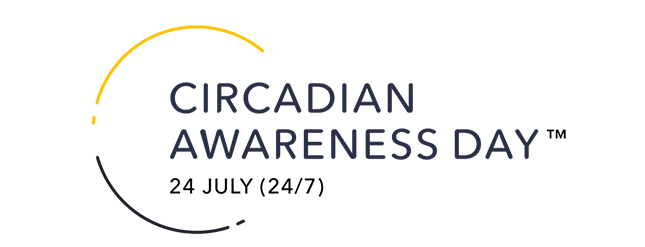 Today is the first Circadian Awareness Day! 24 July, 24/7
Today is the first Circadian Awareness Day! 24 July, 24/7
So, we have a very special Q&A with world-renowned circadian science expert Dr. Steven Lockley of Harvard Medical School and CircadianTech pioneer, Timeshifter’s Co-Founder and CEO Mickey Beyer-Clausen on how…
Connecting artificial clock time with our natural “circadian time” will become the foundation of health and wellness.
In this fascinating interview, they discuss:
- How sleep (our cultural obsession) is not the same as the “circadian clock”—and only solutions that have the timing of light at their center can shift or “reset” our circadian rhythms.
- How our modern world is a circadian nightmare. The future? Solutions that maintain or “reset” our circadian rhythms, a revolution not only for shift workers and jet-lagged travelers but for ALL of us, with our always-on, Zoom-at-5 AM, digital lives.
- How circadian science will transform medicine, with drugs, treatments and vaccines timed to your circadian cycle for maximum efficacy and safety.
- How the future is “circadian wellness”: When is the best time to do that high-intensity workout, eat that particular food, or have that important meeting.
Every July 24 is Circadian Awareness Day, which shines a light on the extraordinary effects our 24/7 circadian rhythms have on our safety, performance and health. LEARN MORE

Dr. Steven W. Lockley, BSc, PhD, is a world-renowned sleep and circadian neuroscientist. He is an associate professor of medicine, Harvard Medical School; a neuroscientist at the Division of Sleep Medicine, Brigham and Women’s Hospital; and the co-founder and chief scientist at CircadianTech pioneer Timeshifter. Dr. Lockley has spent 25 years studying ways to reset the circadian clock and works with clients such as NASA and Formula 1’s elite.
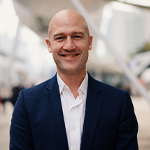
Mickey Beyer-Clausen is a Danish-born, New York-based entrepreneur with a track record of building genre-defining companies. Mickey is the co-founder and CEO of Timeshifter—a circadian science company translating sleep and circadian neuroscience into apps to improve the safety, health and performance for billions of people. Before Timeshifter, Beyer-Clausen co-founded several other businesses, including Trunk Archive, Ascio Technologies and Happiness Foundation.
Both will keynote at the next Global Wellness Summit (November 30–December 3) in Boston, where they’ll share more mind-blowing insight on how circadian neuroscience will drive the future of health and wellness.
I) People are obsessed with sleep, but it’s NOT the same as the circadian clock
McGroarty, GWI VP of research: One of our top wellness trends for 2020 was that the wellness world would shift from their obsession with “sleep” (and the storm of “sleep solutions”) and focus on what matters more: managing circadian rhythms. With Dr. Lockley’s incredible scientific guidance, we tried to explain that ANY solution that claims to “reset” circadian rhythms must have the TIMING of light at its center. We tried, but confusion still reigns. Dr. Lockley, can you “nutshell” the difference between the “circadian clock” and “sleep”? And why it matters?
Dr. Lockley: The confusion is understandable because these are challenging concepts. The circadian system controls the timing of many bodily systems, of which sleep is just one. The circadian (24-hour) clock also controls the timing of many rhythmic functions, including many hormones, lipid and glucose metabolism, immune function, reproductive hormones, bone metabolism, mood and performance, and many others. The circadian system is more wide-reaching than sleep: Sleep is just one output of that central clock. You can think of the clock in the brain as the conductor of an orchestra, keeping the individual members of the orchestra (different organs and functions in the body and brain) in synch. There are clocks in the heart, lungs, kidneys, ovaries and many other cells that can keep their own time but look to the conductor for overall timing. Another analogy: Like that old analog watch on your wrist, there are different hands of the clock that the central clockwork controls. So, think of sleep, metabolism, hormones and immune health as different hands controlled by that central circadian clock in your brain.
What is KEY is that if you want to control the timing of the circadian clock or reset a disrupted clock, you need to develop interventions that have the type and timing of light at the center. Light is the major time cue that synchronizes our circadian rhythms, and light is the solution to reset them. By correcting the timing of the circadian clock, you automatically correct the timing of the systems the clock controls, bringing them all into line to work as efficiently as possible. Circadian disruption is quite common—many of us experience it—and science-based solutions to address the underlying circadian disorders are needed.
The daily solar light-dark cycle is the crucial time cue that resets our clocks every day; if you don’t take in light and dark (like blind people), you can’t reset your clock. Man-made light can both help and hinder this process, depending on when you see it: Electric light after dusk is potentially disruptive but can supplement daylight in the day (or replace daylight if a night-shift worker). Regular, consistent light cues (and therefore wake/sleep schedules, as wake equals light and sleep equals dark) are the pillars of circadian health, but it’s also personal: We all have a slightly different clock time or chronotype. “Early birds” have a clock that cycles faster, and they typically feel better early in the day; “night owls’” clocks cycle more slowly, and they tend to feel better later in the day. Individual chronotypes have many real-world effects because they impact how you line up with time and the world: essentially, when you work best, digest food most efficiently, sleep the longest, etc.
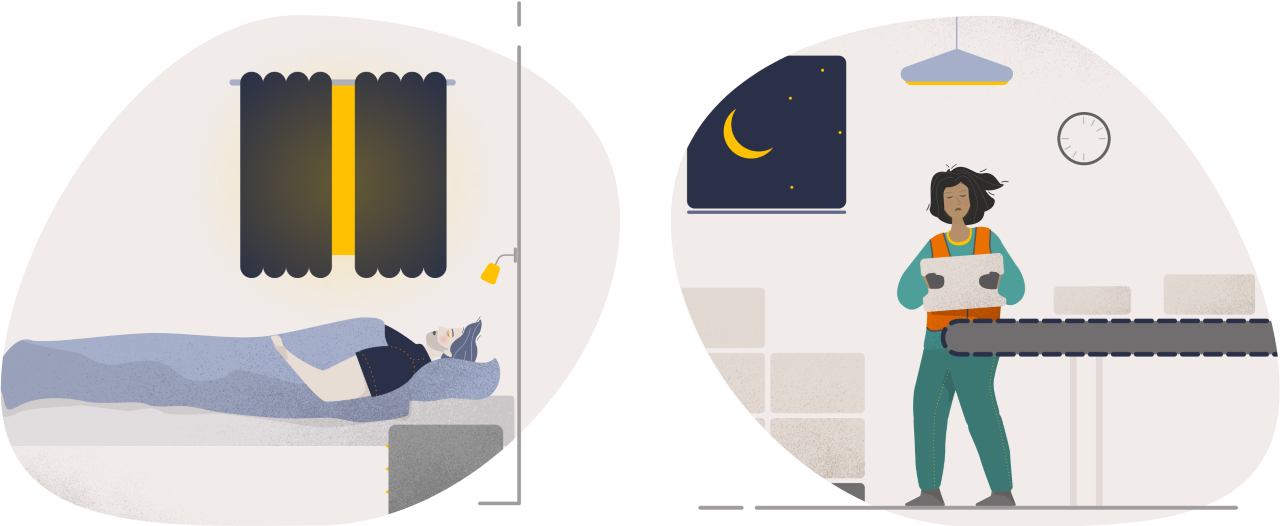
II) The modern world is a circadian ‘lightmare’
McGroarty: Why are we in such a circadian disruption crisis now?
Dr. Lockley: Think about all the disruptions to our circadian clock that have been unleashed in the last 100 years, making us no longer attuned to the natural light/dark cycle. With electric lights, we override that cycle, exposing ourselves to light in the evening and overnight. Jet travel means hopping to new time zones so fast that our clock can’t keep up, causing jet lag. Shiftwork—only possible since the widespread introduction of artificial light—has surged, causing extreme “clock” misalignments. And in a digital, global world, we all expose our eyes to the alerting “blue-enriched” light emitted by electronic devices. We have all become shift workers to some extent, with always-on work and Zoom calls. Those early starts or late nights are “shiftwork” in a way, just less extreme, but can still have damaging effects on circadian rhythms and the myriad systems it controls. Our modern world conspires to disrupt the circadian system, and when those systems are out of sync for years, you not only see sleep problems but higher rates of heart disease, diabetes, depression and some cancers. This is why solutions that can maintain or “reset” our circadian clocks to the right time will be the future of medicine and wellness.
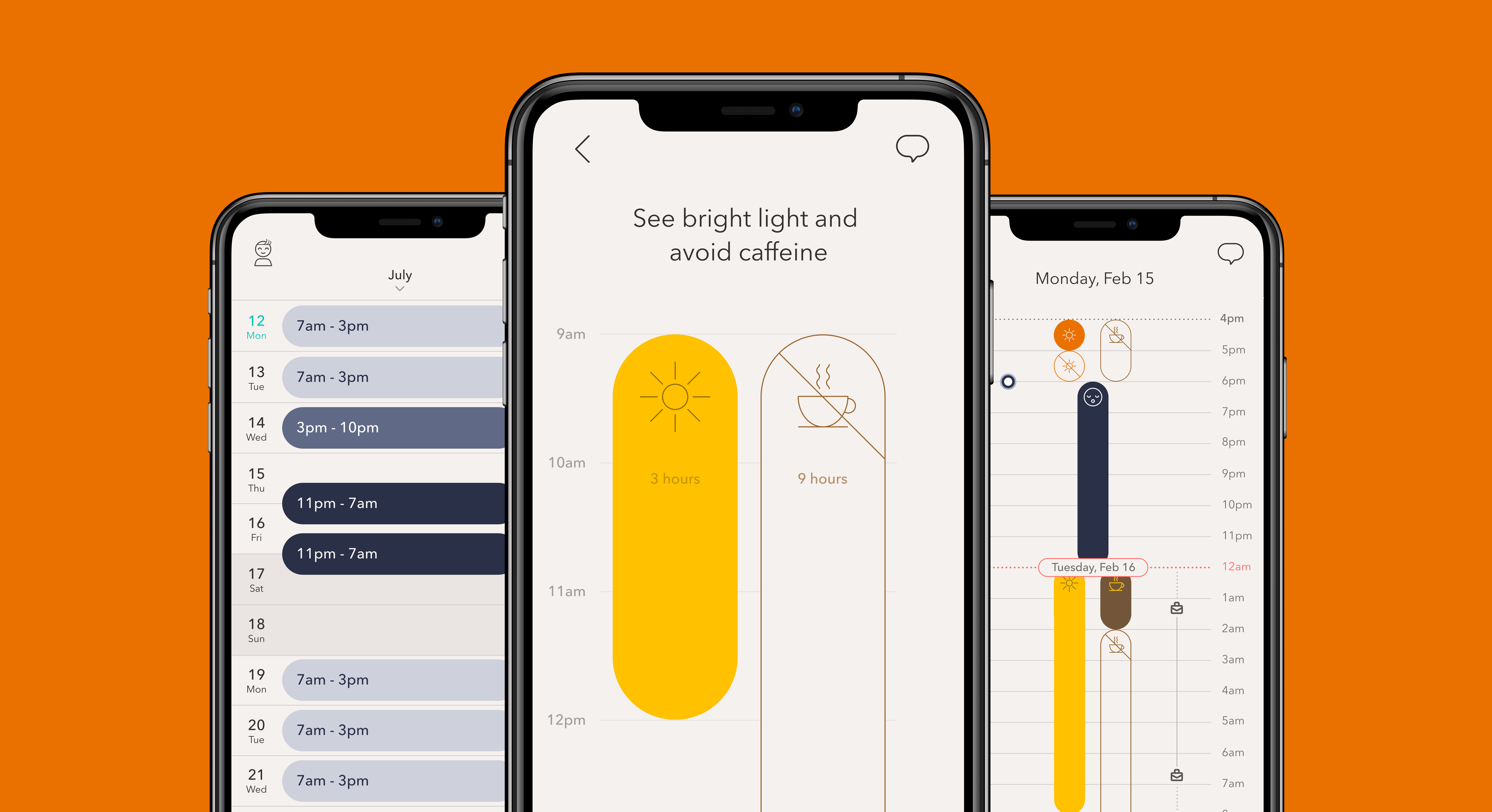
III) How “time-shifting” solutions can eliminate jet lag and improve the health of shiftworkers
McGroarty: And that’s where Timeshifter comes in. First, you launched a jet-lag app, which “shifts” people to new time zones by telling them exactly when to take in dark and light and to sleep (and not). I used it on a trip to Singapore (yes, I wore sunglasses in airports at night), and if you comply, it’s a miracle: no jet lag. Now, you’re expanding into a circadian, “time-shifting” solution for shift workers. Tell me why that’s so important?
Beyer-Clausen: Jet lag was the natural place for us to start, and after we launched that app in 2018, we saw a boom in people using it. COVID temporarily disrupted travel and that adoption, but now it’s coming back. We’ve analyzed surveys from more than 80,000 users, and if you don’t follow the app’s advice, you’re six times more likely to experience severe jet lag and 17 times more likely to experience very severe jet lag! But Timeshifter isn’t just a jet-lag app; our plan has always been to solve other large, previously unsolved circadian-based problems.
Next up is shift work, a disruptive circadian misalignment problem leading to huge worker safety, productivity, and physical and mental health issues. With almost 700 million people (20% of the US workforce) working shifts and struggling with irregular work schedules, we can’t continue to ignore the many negative consequences it causes. Shift work and irregular hours are prevalent in many industries, including manufacturing, construction, mining, security, hospitality, warehousing, delivery and transportation. The extent of the problems associated with shiftwork makes it an exciting problem for us to solve because it will make such a huge difference in people’s quality of life, productivity, safety and health.
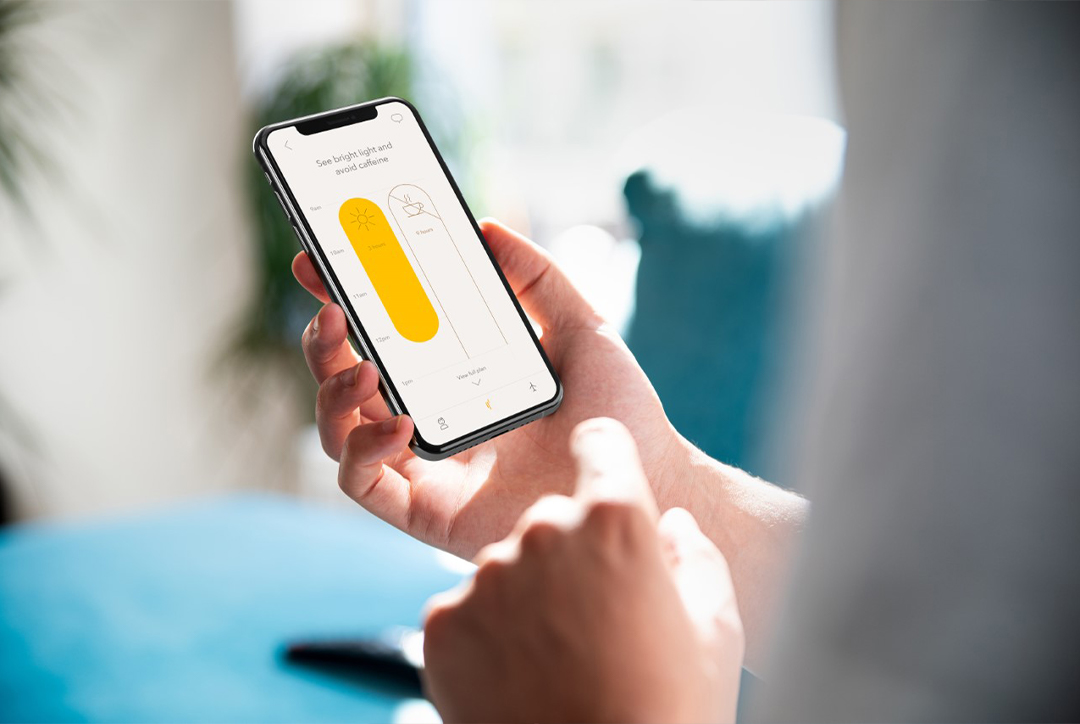
ift work was a more challenging problem for us to solve than jet lag, which tends to be an infrequent experience. Both involve severe disruptions in the light-dark exposure cycle, but for shift workers, the problem is often continuous and chronic. So, the new app gives advice on when that worker should take in light and dark (and their optimal sleep times) in a continuous way. We also had to factor in people’s daily realities (you have to pick up your kids at school, which affects when we can ask you to sleep, for example), so we built in the ability to add personal constraints in addition to our “practicality filters” that ensures our advice is easy to follow in the “real world.” With every solution we build, we want to rigorously translate the science into an experience that’s highly intuitive and easy to use.
IV) With always-on work, and whacked out light exposure, we ALL need circadian “resetting”
McGroarty: But what about circadian solutions for “regular” people like me? With the Internet killing the divide between life and work (goodbye 9-to-5), which was further killed by work-from-home and Zoom calls that happen at 5 AM and midnight the same day, don’t we ALL need constant “time-shifting” and circadian resetting?
Dr. Lockley: Absolutely: Circadian disruption is a continuum, and these problems run all through society, from people who do the same thing every day to extreme shift work. The more variability, or “wobble” in behavior, you have in your circadian clock day-to-day (erratic sleep/wake times, light/dark exposure), the more health and productivity problems you’re going to have.
Beyer-Clausen: There’s huge potential for us and others to build tools that help everyday people manage their circadian clock far more effectively. If you use science to estimate where people are at in their circadian cycle, apps can help you TIME your life far better: When is the best circadian time for individuals in Singapore and LA to Zoom or how to make sure your brain and body are ready when you need to be at your best.
There are so many use cases. Athletes want to perform when their body is at its most alert, energized state, but running a marathon at 9 AM is radically different than playing a basketball game at 8 PM. So, we’re working with Olympic athletes to match performance time to peak circadian time.
Ten years ago, sleep was not a cultural priority, and people bragged about not sleeping. Now, it’s a half-trillion-dollar economy. Expect circadian science to go mainstream in the next few years and the circadian economy to eventually overtake the sleep economy. The future is connecting artificial clock time with “natural time”—your individual circadian clock. It’s about making “circadian time” every bit as important as clock time—something just as visible to you on your watch—so you know what’s happening in your body, can time activities in your life better, and even proactively “shift” your circadian clock to tackle jet lag, manage changing work schedules, be at your best when you need to perform, or increase the antibodies stimulated by your vaccine.
V) Circadian science will transform many industries, from the timing of medicine to sunglasses
McGroarty: Any other major circadian issues that need fixing? What’s ahead in the future?

Beyer-Clausen: Here is one example of an overlooked problem that could easily be turned into an opportunity: The multibillion-dollar sunglasses industry has so far focused on enhancing color and contrast so their customers can see more detail but often forget that their lenses also alter the quality of light the eye receives to reset the circadian clock or alert the brain. Who wants their sunglasses to tell their brain that it’s night during the day, making them sleepy exactly when they don’t want to be or tell their brain it’s day in the evening, making them alert when they want to prepare for sleep?
Just like with our ears which control hearing and balance, our eyes have two separate functions: One is to see our surroundings (that’s all we have thought about until now), but the eyes have a second, completely separate system sending light and dark cues from special cells in the eyes directly to our circadian clock, telling the brain if it’s day or night. If we’re wearing sunglasses that don’t let in the right spectrum or intensity of light, you’re messing with the circadian clock. We need “circadian-enhanced lenses” that help us both see well and inform the brain what time it is—an enormous new opportunity for the industry. This would be great in our daily lives but also enable an even better time-shifting experience when we travel or work at night shifts.
Dr. Lockley: And the current “blue-light-blocking” glasses approach can be overly simplistic and unscientific: Blocking blue light is one component, but other wavelengths of light at night negatively affect the circadian system and need to be addressed.
Dr. Lockley: In the not-too-distant future, we will be applying circadian science in medicine, which will take many forms and have a massive impact. Right now, medicine all revolves around clock-time, not an individual’s circadian time, but we see differences of up to nine hours in the timing of circadian clocks between individuals living in the same time zone! You and I are given drugs, treatments and vaccines at the same clock-time even though our circadian rhythms might be very different. It might be better for you to take that morning pill at 7 AM, but better for me to take it at 10 AM to get the best effects or fewer side effects. We know, for example, that different vaccines work better at different times of the day and are likely to work even better if we timed them to individual circadian times. In another example, you and I might get a lab test at the same time, but you’re an early bird, I’m a night owl, and the results will be different and need to be interpreted differently. We’ve known for over 20 years that with certain chemotherapies, the timing matters and can have a big impact on toxicity and even mortality rates (there have been encouraging clinical trials, but bigger ones are needed).
Beyer-Clausen: Medicine needs to incorporate circadian timing as a factor in clinical trials for drugs because the majority of medications likely have a circadian element in terms of maximum efficacy and also toxicity. If you take drugs at the right time, you might be able to use less for the same benefit. So, in the future, we will have clinical standards governed by circadian time, and you will be able to measure your circadian rhythms in the doctor’s office, just like your blood pressure, to inform advice at the right time for you. Clinics might say, however, that it will be too difficult to get everyone their ideal “circadian” appointment time. But with Timeshifter, if a patient has a noon chemotherapy or vaccine appointment, we can shift their circadian clock to match that appointment time. We don’t need to shift the medical system, just the patient. We’re looking for pharma partners to collaborate with us to understand COVID vaccine timing, for example, because if you could change the percentage efficacy even by a small amount by delivering vaccines at the optimal time, you could have an enormous impact on world health.
Once we measure and model circadian rhythm timing more routinely, we’re going to find that so many medical interventions have a circadian component—for things we don’t even realize yet. The new era of circadian medicine will become a routine part of your healthcare management, and in terms of prevention, it’s going to have a revolutionary effect: Getting the timing of medicine right will improve the health of billions of people.
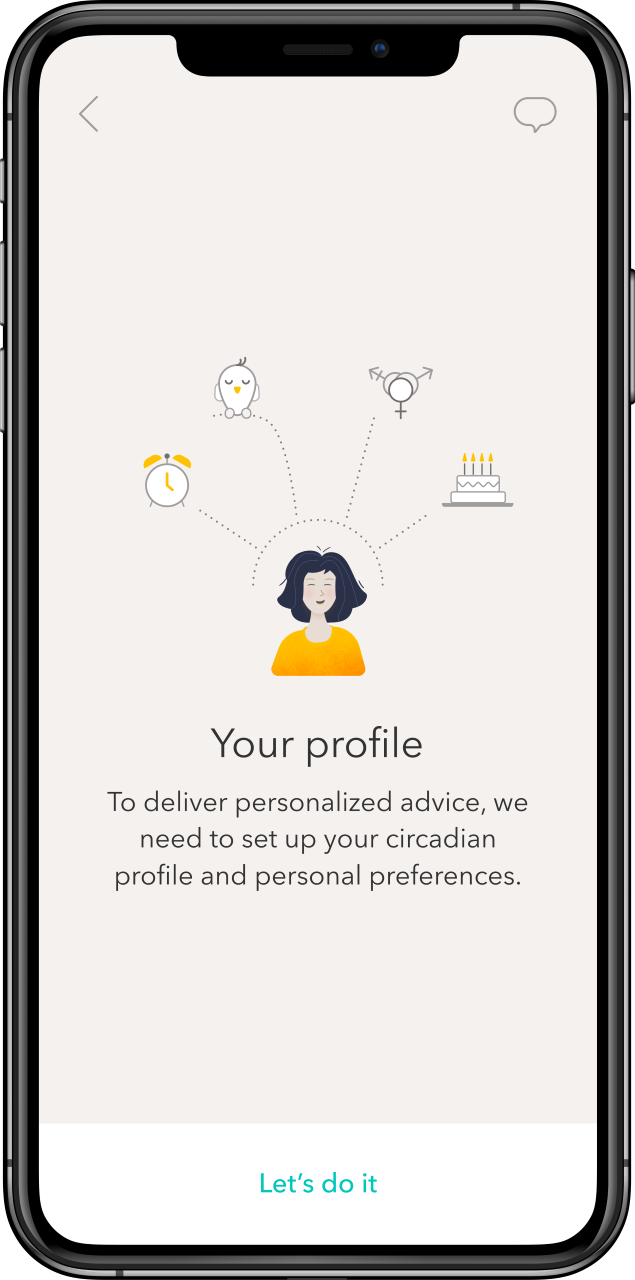
VI) Wellness–from when to exercise, eat or sleep–needs to embrace circadian timing
McGroarty: What about the timing of “wellness”?
Beyer-Clausen: Every aspect of health and wellness is governed by the circadian clock. Circadian rhythm measurement and advice can tell you when it’s a better or worse time for everything from that high-intensity workout to eating a particular food.
Dr. Lockley: There are so many wearables tracking all kinds of data, and what we need to do is put the timing of that data at the very center of health tracking. It sounds biased, but justifiably so, given the ubiquity of circadian rhythms on our biology, organs and cells. There’s a lot of promise in harvesting the wealth of biometric data out there to detect and optimize circadian rhythms if used correctly. Wellness depends on timing for eating, sleeping, and exercising, but at the moment, circadian timing is not adequately accounted for. When it is, the health benefits will be even greater.
McGroarty: Whenever I talk to you, my mind reels. I’ve learned that with health and wellness, “timing is everything”—and I’m now pining for a watch that tells my “circadian time” and pondering my defective designer sunglasses. Thank you!

